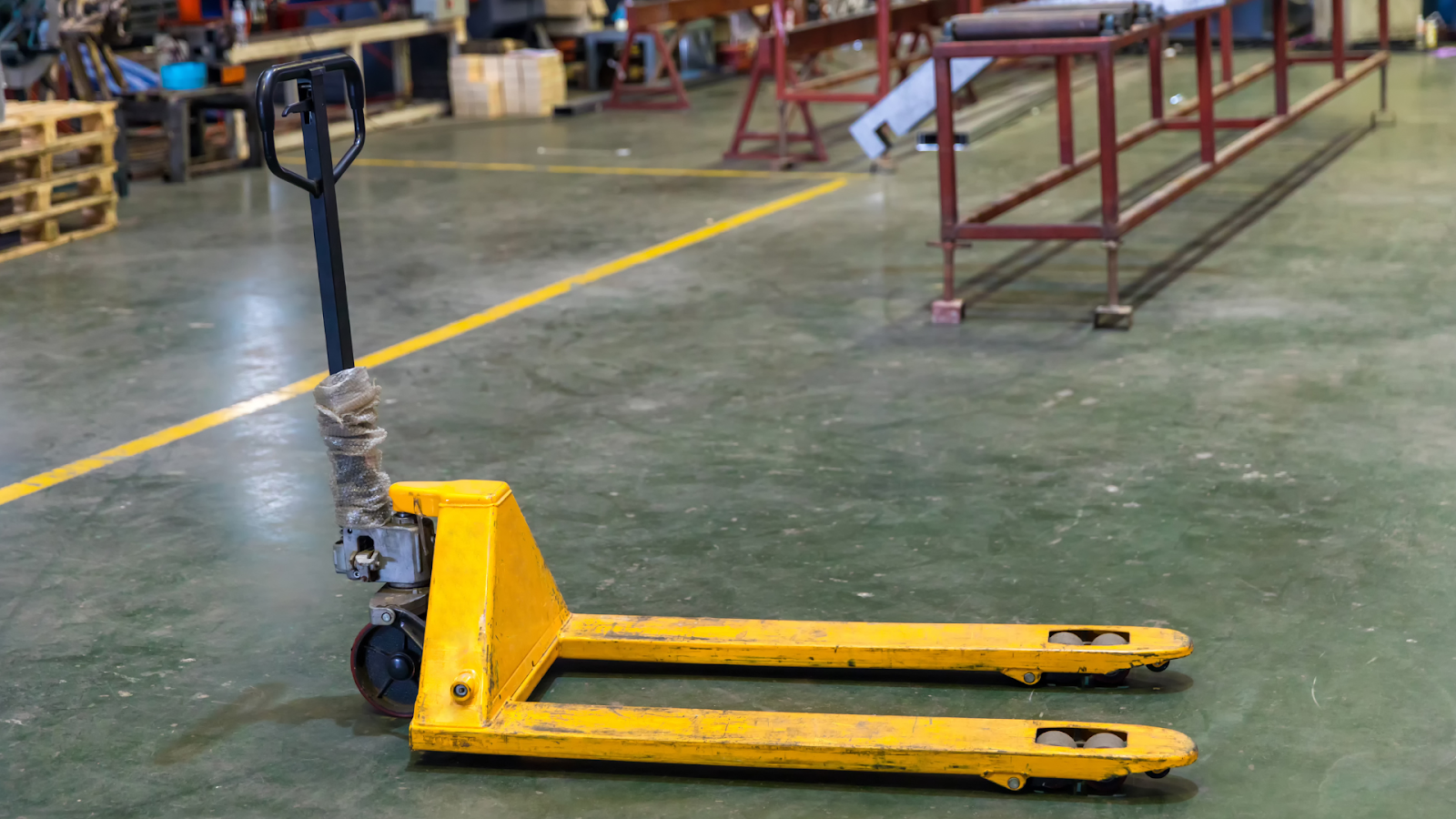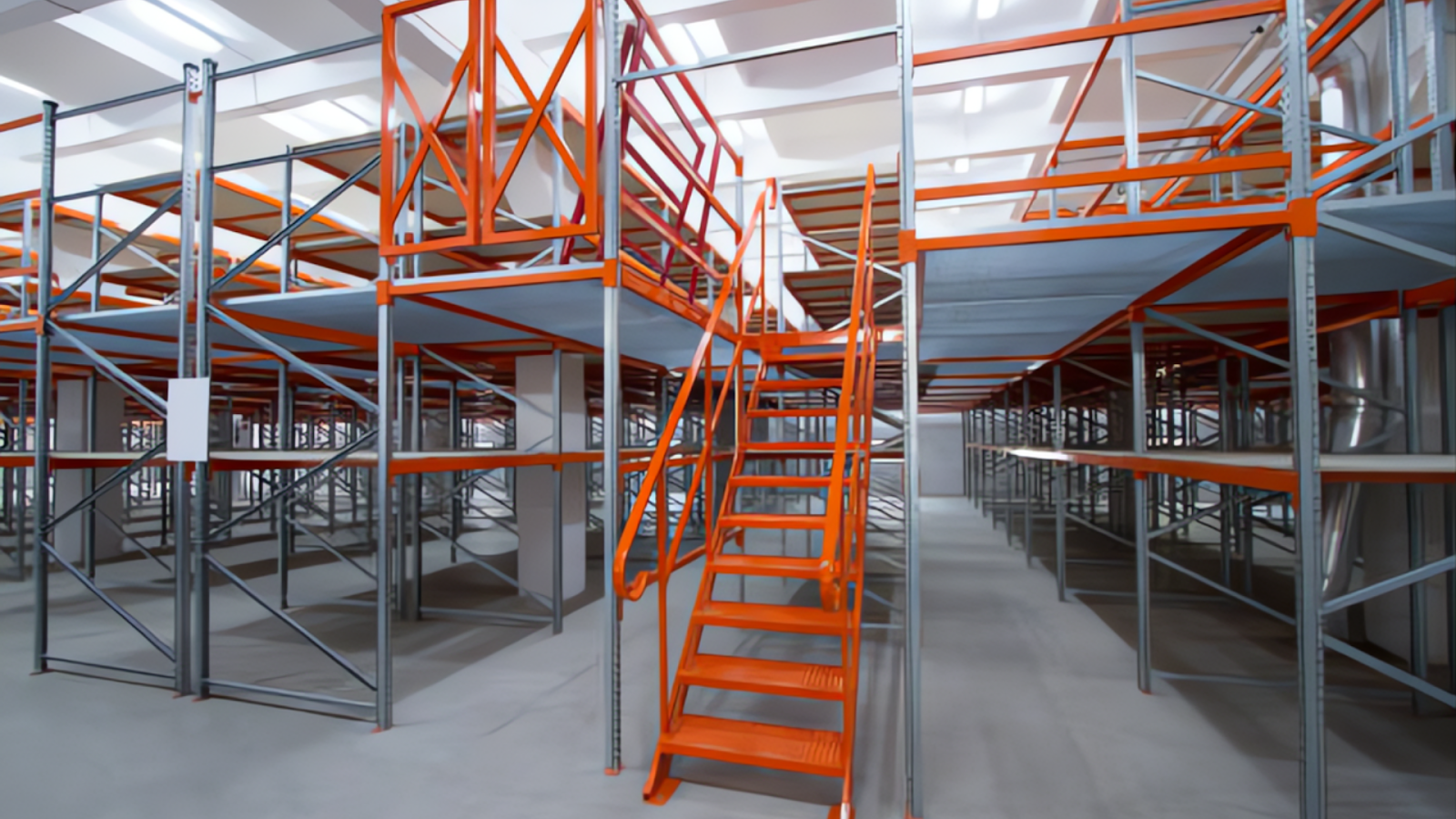Pallet racking systems are essential for efficient warehouse operations, impacting safety, compliance, space utilization, and operational efficiency. Systems like pushback racking are gaining popularity for their ability to increase storage density and optimize space. Operations Managers, Facilities Managers, Procurement Managers, Safety Officers, and Business Owners must optimize racking systems to boost productivity, ROI, and minimize risks.
In this blog, we’ll look into the key factors that affect pallet rack performance and how to ensure your systems are safe and efficient.
The weight capacity of a pallet rack depends on several factors, including design, material strength, and beam spacing. It’s essential to understand these parameters to ensure both the safety and functionality of your storage system.
Warehouse racking systems are engineered to handle varying weights based on configuration, material types, and storage methods. Proper understanding of these factors ensures safety and prevents overloading, which can cause damage to the rack and safety hazards.
To meet pallet rack spacing requirements and ensure safety, Source Equipment provides high-quality solutions like Husky Rack & Wire's Pallet Rack Enclosures and Velox Racks, designed for heavy-duty storage. With proper spacing and sturdy construction, these products help you comply with all safety guidelines.
Request a quote today and optimize your pallet rack setup with Source Equipment’s trusted partners.
Given this, Procurement Managers can ensure that the racking system selected matches the weight of the products stored, reducing safety risks and improving operational efficiency.

Pallet racks are typically designed for storing goods, but can they support heavy machinery or equipment? Let’s explore the considerations and limitations of using pallet racks for heavier items.
Using the right type of racking system for heavy equipment prevents structural failures and ensures the safe storage of valuable industrial machinery, ultimately improving warehouse safety and operational performance.
Proper load distribution is key to maintaining the strength and stability of pallet racks. Knowing how the weight is distributed across the system is crucial for preventing overloading and ensuring safety.
Understanding how much weight your pallet rack can handle is only part of the equation, let’s explore what factors affect its weight capacity.

The weight capacity of pallet racks depends on several factors, like material strength, rack configuration, and beam spacing. Knowing these factors ensures the racks are used within safe limits.
The load capacity of beams and uprights is determined by the steel’s strength and dimensions. Facilities Managers must choose racks with beams that match the weight of stored materials. Stronger, thicker beams support heavier loads, ensuring stability and reducing the risk of structural failure.
Different racking configurations offer varying weight capacities. Selective racking is suitable for lighter loads, while drive-in or push-back racks are designed for heavy-duty storage. Operations Managers must choose the right configuration based on load requirements to prevent overloading and ensure effective space utilization.
Rack height and beam spacing directly influence weight capacity. Taller racks support more weight, but the risk of instability increases. Operations Managers need to evaluate the rack design carefully to ensure that it can handle the required loads without compromising stability.
Proper weight distribution across the beams is essential for maintaining rack strength. Uneven loads increase stress on specific sections, risking failure. To maximize safety, businesses should ensure that loads are evenly distributed to prevent damage and maintain operational efficiency.
Extreme environmental conditions like high humidity or temperature fluctuations can weaken racking materials. In such environments, racks need special treatments to prevent rust or degradation. Warehouses must choose racks that can withstand harsh conditions to ensure long-term durability and maintain safety standards.
Knowing these factors helps you determine the standard weight limits of your pallet racks.
Pallet racking systems vary in their weight capacity depending on their configuration, height, beam dimensions, and material strength. Below is an expanded guide to the weight limits for standard pallet racks based on configuration and height.
But how is this weight capacity calculated? Let’s look into the calculation methods for your specific pallet rack.
The weight capacity of a pallet rack is calculated by analyzing the structural strength of the materials, the beam dimensions, and the spacing of the beams. Below is the formula for calculating the load capacity of a pallet rack:
Load Capacity Formula

Where:
To make sure you're using your racks properly, it's essential to know how to calculate the load capacity for your specific setup.

To calculate the load capacity for your specific pallet rack, you must take several steps to ensure the system is designed to support the weight of your stored materials. These steps help you determine if the existing rack setup is suitable or if modifications are necessary to avoid safety issues.
Determine the material used for the beams, such as A36 steel or higher-grade steel. Steel grades have specific strength ratings, and understanding the material’s tensile strength is crucial for accurate load calculations. Procurement Managers must ensure the steel used is appropriate for the type of goods being stored.
Measure the length, height, and width of the beams. Larger beams (greater length, width, and height) generally offer higher weight-bearing capacities. It's essential for Facilities Managers to measure these dimensions accurately to determine whether the racking system can handle the required load.
Measure the distance between the beams. The further apart the beams, the less load each beam can bear. Operations Managers should ensure that beams are spaced closely enough to provide adequate support while also ensuring that they are not spaced too closely, which could reduce storage efficiency.
Once you have these measurements, you can use the formula above to calculate the total load capacity of each beam level. The calculated load capacity should always be compared to the expected weight to ensure safe operation and prevent overloading.
Let’s walk through a practical example to calculate the load capacity of a pallet rack. By applying the formula based on material, beam dimensions, and spacing, you can ensure your racking system is safe and compliant.
Assumptions:
To calculate the load capacity for each beam level, use the formula:

Result: Each beam level can support 2,500 lbs.
Along with understanding your rack's weight capacity, it's important to adhere to guidelines and safety standards to ensure safe usage.

To ensure safe and compliant use of pallet racks, it's crucial to follow established safety standards and regulations set by recognized bodies. Below are the key compliance regulations and guidelines that must be followed:
Maximizing the efficiency of your pallet rack system is crucial for maintaining proper spacing and organization. Source Equipment offers Bayhead’s Stacking Pallet Containers, perfect for optimizing vertical space while adhering to spacing guidelines. Ensure a safe and efficient storage setup with products designed for compliance.
Get in touch for a consultation to discuss your pallet rack spacing needs.
By following these standards, you can ensure your pallet racks are set up safely, now let's look at some best practices for maintaining weight limits.
Setting up pallet racks according to best practices is essential for safety and compliance. These practices help maintain rack integrity, avoid accidents, and ensure operational efficiency.
As you optimize your pallet rack system, make sure to choose high-quality solutions from trusted suppliers like Source Equipment.
Designing an efficient pallet racking system requires a partner who understands the intricacies of warehouse storage and the importance of complying with safety and operational standards. Source Equipment, a US-based supplier, specializes in providing high-quality material handling and warehouse storage solutions, backed by decades of expertise. From pallet rack spacing requirements to ensuring proper weight distribution, Source Equipment offers tailored solutions to help businesses meet both technical and regulatory needs.
Here’s how Source Equipment’s range of products can enhance your warehouse operations with some of the best products for your pallet rack setup:
Husky Rack & Wire:
Bayhead Products:
By integrating these products into your warehouse operations, you can ensure optimal pallet rack spacing, enhance safety, and improve overall efficiency. Source Equipment's extensive range of high-quality products is designed to meet the diverse needs of various industries, including warehousing, manufacturing, logistics, retail, government, utilities, and construction.
Understanding load capacities, weight limits, and safety guidelines optimizes storage solutions. Adhering to these principles helps businesses in warehousing, manufacturing, logistics, and construction boost efficiency, ensure safety, and reduce operational bottlenecks. Regular maintenance and proper load distribution enhance ROI and long-term effectiveness.
Source Equipment, in partnership with top brands like Husky Rack & Wire, offers heavy-duty racking systems such as Velox and Invincible Racks. These solutions are specifically designed to meet high-density storage needs while maintaining the correct spacing to comply with industry guidelines.
Contact Source Equipment today and let us help you meet all pallet rack spacing requirements.
The ideal spacing between pallet racks depends on factors such as the size of the pallets and the type of material handling equipment being used. Generally, a 3 to 5-inch gap between the rack and the walls is recommended for safety and accessibility. Ensure enough space for forklifts to maneuver and for compliance with safety regulations.
Proper pallet rack spacing is essential for ensuring safe operation. If racks are spaced too closely, it can limit forklift movement and increase the risk of accidents. Adequate space allows for safe access of equipment and reduces the chance of product damage, ensuring that the warehouse complies with safety standards.
Yes, pallet rack spacing requirements can vary depending on the industry. For instance, warehouses in the food industry might need different spacing than those in manufacturing due to specific regulatory requirements or the need for more airflow. It’s essential to consult with industry-specific guidelines to determine the proper spacing.
Failing to follow pallet rack spacing guidelines can result in safety hazards such as accidents, damage to products, and inefficiency in warehouse operations. It can also lead to non-compliance with OSHA or other regulatory bodies, potentially resulting in fines or shutdowns until safety standards are met.
To optimize warehouse layout, start by assessing your available space, the type of products being stored, and the types of equipment used. Measure the aisle widths, taking into account the required clearances for forklifts, and adjust the racking system accordingly. Consulting with an expert or using layout design software can help in creating an efficient and safe layout.




Ready to Upgrade Your Process Operations?